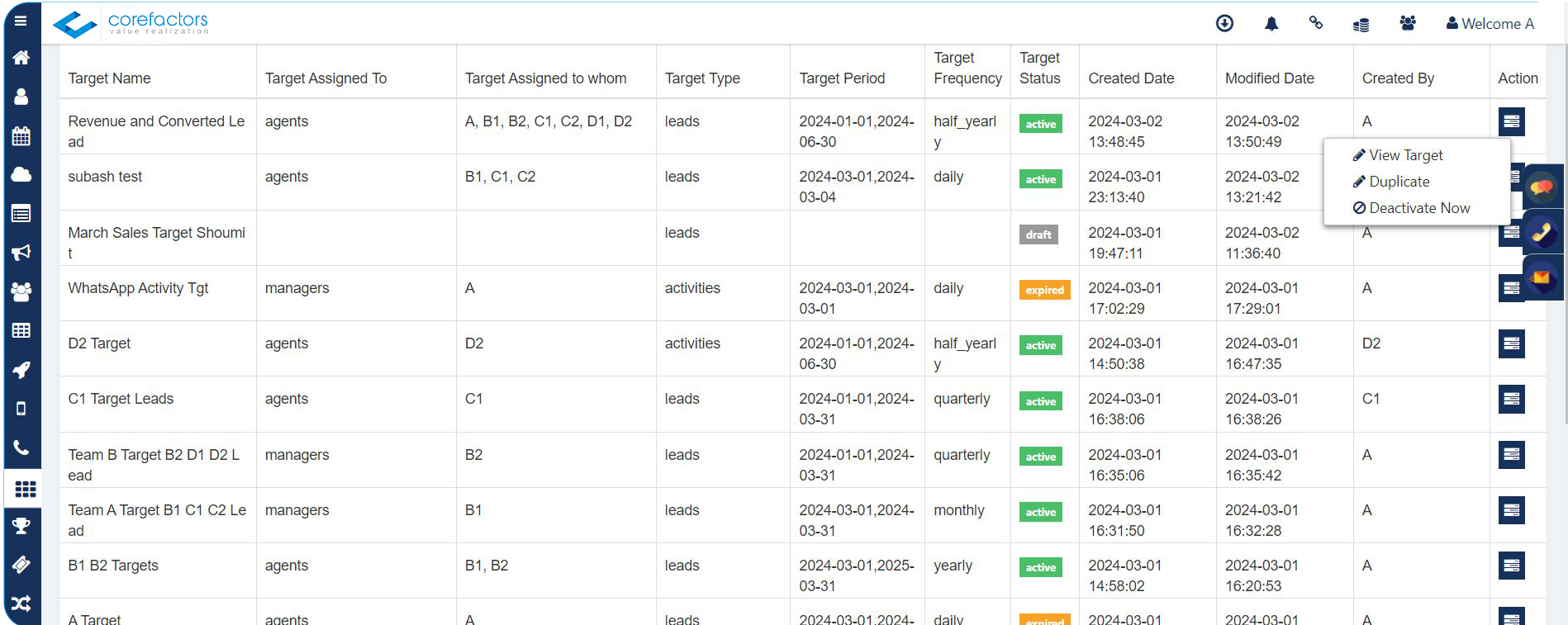If your sales reps are constantly failing to meet their sales targets, you need to take a second look at your target management strategies. Maybe, the shortcoming is in the setting of sales goals rather than achieving them.
This blog post will answer how to set smarter sales targets for your team.
Before we get to the how, let’s know more about the what.
What is a Sales Target?
A sales target is a specific goal set by an individual (team member or lead) to achieve a certain level of sales within a defined period. These targets are typically expressed in terms of revenue, units sold, or some other measurable metric.

Sales targets serve as benchmarks for evaluating performance and guiding efforts to drive business growth. They can be set at various levels, such as for individual sales representatives, teams, departments, or the entire organization. Achieving sales targets often involves strategic planning, effective execution, and ongoing performance monitoring and adjustments.

What is a SMART Sales Target?
A SMART sales target is a goal that is Specific, Measurable, Achievable, Relevant, and Time-bound. Let's break down what each of these elements means in the context of setting sales targets.

- Specific: The target should be clear and well-defined, leaving no room for ambiguity. It should answer the questions of who, what, where, when, and why. For example, instead of saying increase sales, a specific target would be to increase sales revenue by 20% in the next quarter.
- Measurable: The target should be quantifiable so that progress can be tracked and measured. This allows for objective evaluation of performance. Using concrete metrics like revenue generated, leads converted, units or plans sold, or market share makes it easier to determine whether the target has been achieved.
- Achievable: Your sales target should be realistic and attainable within the given resources and constraints. While it's important to set ambitious goals, they should also be within the realm of possibility. Unrealistic targets can demotivate sales teams and lead to frustration.
- Relevant: The target should align with the overall objectives and strategies of the business. It should contribute to the company's mission and be meaningful in the context of its broader goals. Setting targets directly related to business priorities ensures that efforts are focused on what matters most.
- Time-bound: The target should have a specific deadline or time frame for achievement. This creates a sense of urgency and helps prevent procrastination. Setting a timeframe also allows for periodic assessment and adjustment of strategies to stay on track toward reaching the target.
How to Set Smarter Sales Targets for You and Your Team?
Now that you know what SMART targets mean, let's explore more on how you can set these targets for your team as well as yourself.

- Define Clear Objectives
Start by conducting a thorough review of your business's overarching goals and objectives. What are you aiming to achieve in the short term and long term?
Apply the SMART criteria to set specific, measurable, achievable, relevant, and time-bound targets for your sales team. Break down these broad objectives into specific sales-related goals. For instance, if your business objective is to increase revenue by 20% within the next year, your sales goal might be to achieve a 15% increase in monthly sales.
Ensure these objectives are realistic and attainable based on your current market position, resources, and industry trends.
2. Identify Key Metrics
Determine the key performance indicators (KPIs) most relevant to your sales objectives. These metrics will serve as benchmarks for measuring progress and success.
Common sales KPIs include sales revenue, customer acquisition cost (CAC), customer lifetime value (CLV), conversion rates, sales pipeline velocity, and average deal size. Choose KPIs that align closely with your business goals and provide actionable insights into your sales performance.
3. Analyze Past Performance
Take a deep dive into your historical sales data to identify trends, patterns, and areas of strength and weakness.
Look for factors influencing past sales performance, such as seasonal trends, marketing initiatives, competitive landscape, and economic conditions. Use this analysis to set realistic benchmarks for future performance and identify areas where improvements can be made.

Weekly or monthly comparisons of targets achieved develop a sense of accountability and transparency in the team. It helps all members to work together and help each other to reach a common goal.
4. Collaborate and Communicate
Involve your sales team in the target-setting process to ensure buy-in and commitment from all stakeholders. Hold collaborative meetings or workshops where team members can contribute their insights, experiences, and ideas.
Communicate the targets, expectations, and timelines clearly to everyone involved, and encourage open dialogue and feedback throughout the process.
5. Be Tech-savvy
Leverage technology, such as CRM systems with target management features, to streamline the target-setting process and facilitate progress tracking and monitoring. These tools can provide valuable insights and analytics to support decision-making.
Corefactors’ target management feature comes with a target dashboard to set as well as monitor targets. Targets can be managed at an individual as well as a team level. This CRM platform also comes with real-time sales dashboards, sales forecasting tools, and performance reports to ensure your business meets its targets on time.

Key Takeaways
Your business is most likely failing to meet its targets because of poor target management. Ensure your team knows how to set sales goals that are SMART.
Invest in a good CRM that not only benefits the customer but also helps your internal teams manage their targets better.
Setting smart targets is the key to driving performance, motivating your sales team, and contributing to the overall success of your business.

Frequently Asked Questions (FAQs)
1. What is meant by SMART goals?
A SMART goal is Specific, Measurable, Achievable, Relevant, and Time-bound.
2. What is an example of a SMART goal for sales?
If your business objective is to increase revenue by 20% within the next year, your sales goal might be to achieve a 15% increase in monthly sales.
3. How can you set SMART goals for your team?
Invest in a CRM tool like Corefactors that has a target management feature. This will help you define and monitor targets for overall advancement.







